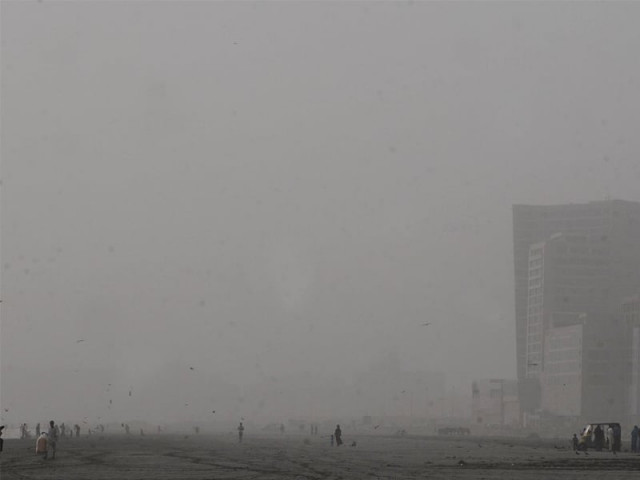
Balochistan’s Barkhan district received 50 millimetres rain on Tuesday while Quetta received 30.
“However, the system is getting weaker as it travels over land,” said Muhammad Tauseef, the chief meteorologist. “I would say Karachi might see between five and 10 millimetres of rain.”
Although rain at this time of the year is unusual for Karachi, Tauseef said it was a one-time occurrence. “A low-pressure system was created over Gulf of Oman. The sea was feeding it continuously with moisture and intensifying it.”
Given the prediction, nine dozen flood-prone sites have been identified in the city, prompting Karachi Metropolitan Corporation (KMC) to hold a marathon meeting to prepare rescue operations. The places are: The airport at Sharae Faisal intersection, Shah Faisal Colony, KDA Chowrangi, Gujjar Nullah, Kharadar, II Chundrigar Road, Nipa Chowrangi, Gulshan-e-Iqbal’s Block 13 D and Gulstan-e-Zafar. The areas might be submerged if there is heavy downpour. However, the meteorological office predicts between five and 10 millimetres of rain on Thursday.
Although this is not enough to cause any major flooding, the KMC administrator, Muhammad Hussain Syed, has ordered preparation nonetheless.
KMC is holding drills to help prepare its staff ahead of the monsoon rains which usually affect the electricity and drainage systems every other year.
“We have deployed all our staff and machinery to meet the challenge,” said Syed. “Hospitals, the fire brigade and rescue services have been alerted. All leave has been cancelled.”
The administrator also gave orders that KMC officers personally inspect places where billboards topple because of strong winds.
District Municipal Corporation (DMC) Central Administrator Nazir Lakhani said arrangements had been made to evacuate people from low-lying areas. “For example, KBR Society is affected almost every time Gujjar Nullah overflows,” he said. “It has become a standard practice to evacuate the people from banks and move them to designated shelters.” He said that the construction over natural storm-water drains was a major problem for the authorities. “It is made worse by the fact that we have started using them as sewage drains.”
Published in The Express Tribune, April 19th, 2012.








1726054615-0/OpenAI-(2)1726054615-0-270x192.webp)









COMMENTS
Comments are moderated and generally will be posted if they are on-topic and not abusive.
For more information, please see our Comments FAQ